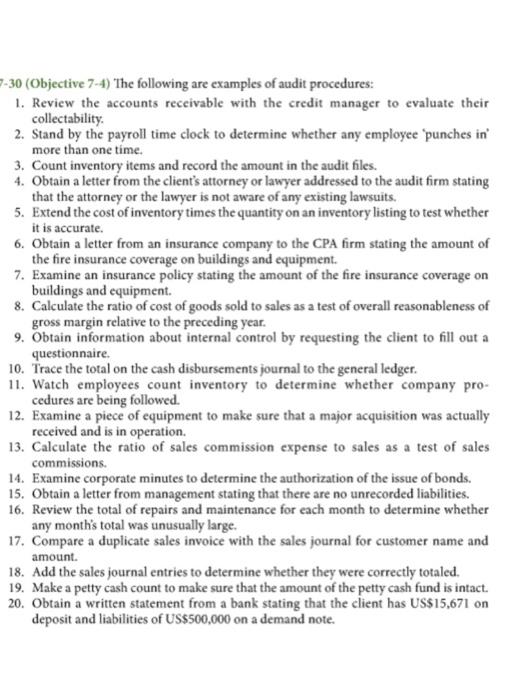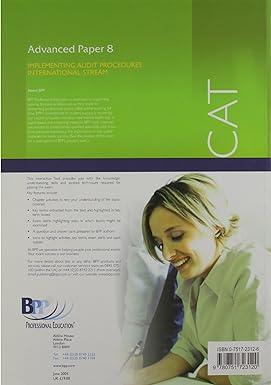Answered step by step
Verified Expert Solution
Question
1 Approved Answer
Classify each of the preceding items according to the eight types of audit evidence: 1. Physical examination 2. Observation 3. Confirmation 4. Inspection 5. Analytical
Classify each of the preceding items according to the eight types of audit evidence: 1. Physical examination 2. Observation 3. Confirmation 4. Inspection 5. Analytical procedures 6. Inquiries of the client 7. Recalculation 8. Reperformance

Step by Step Solution
There are 3 Steps involved in it
Step: 1

Get Instant Access to Expert-Tailored Solutions
See step-by-step solutions with expert insights and AI powered tools for academic success
Step: 2

Step: 3

Ace Your Homework with AI
Get the answers you need in no time with our AI-driven, step-by-step assistance
Get Started


